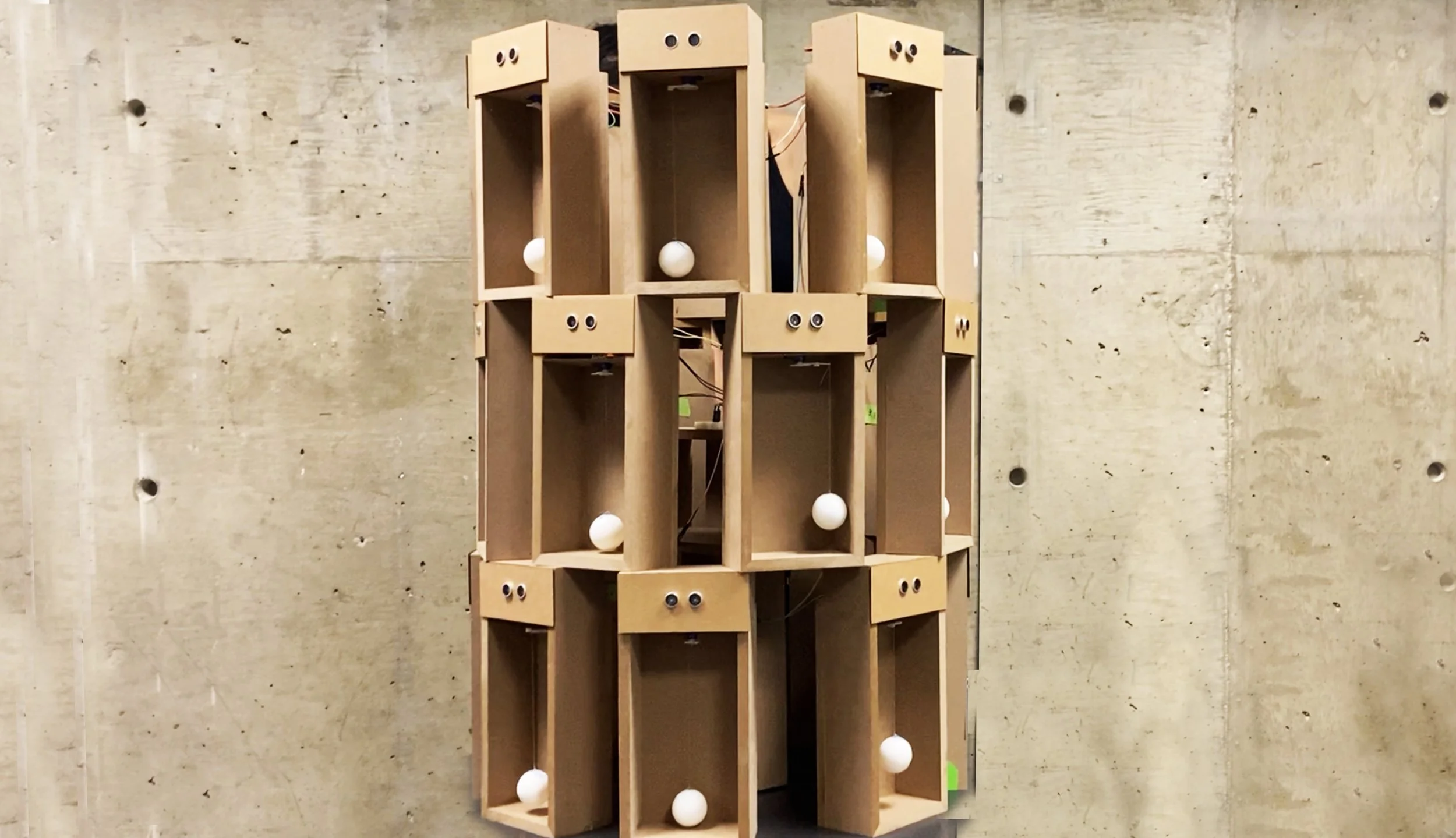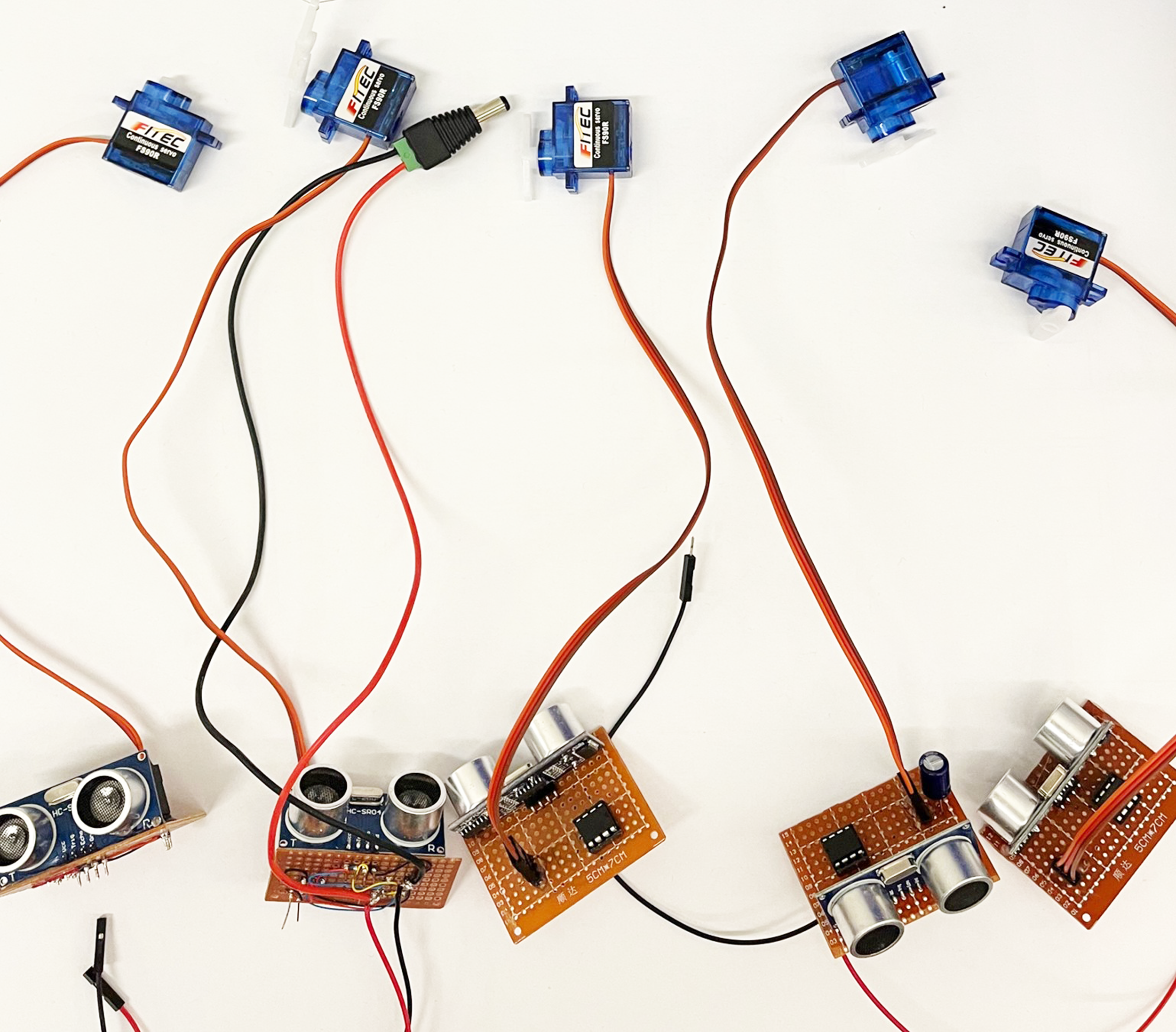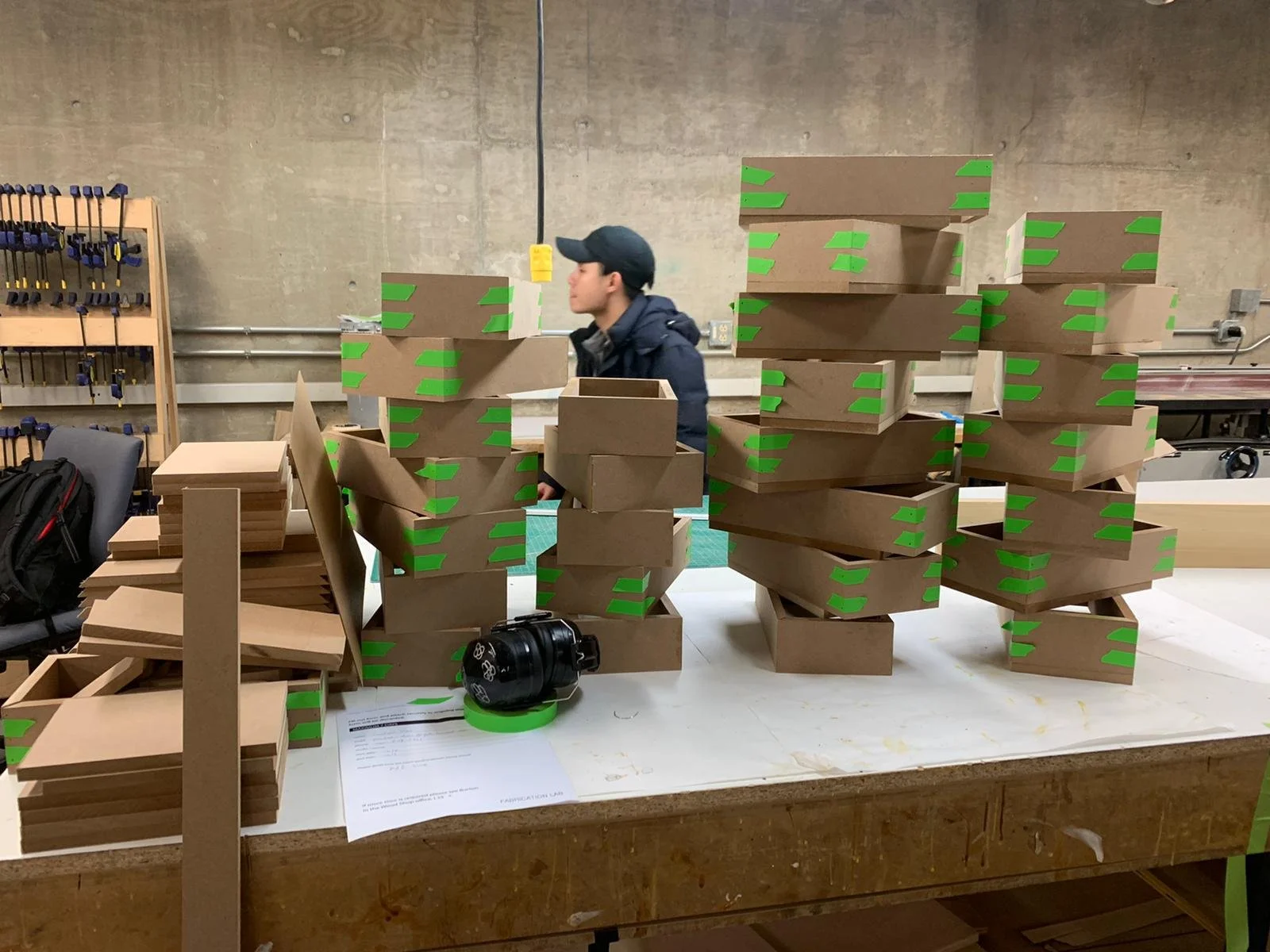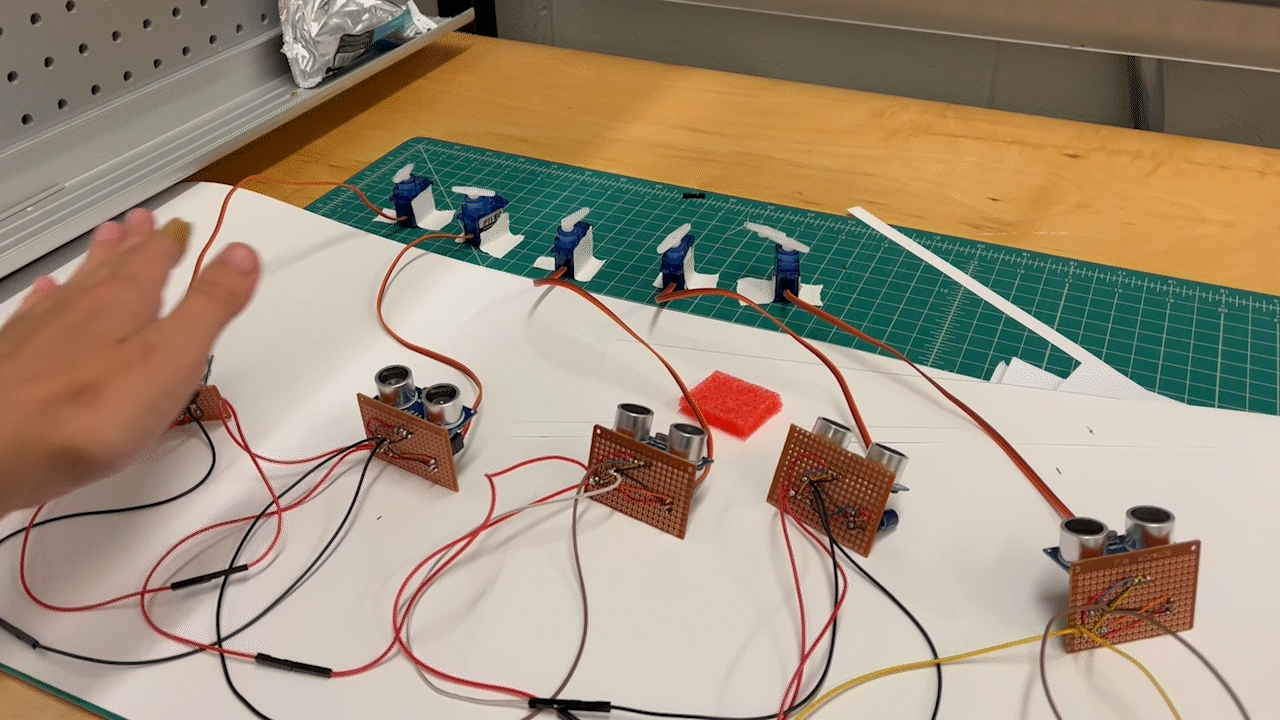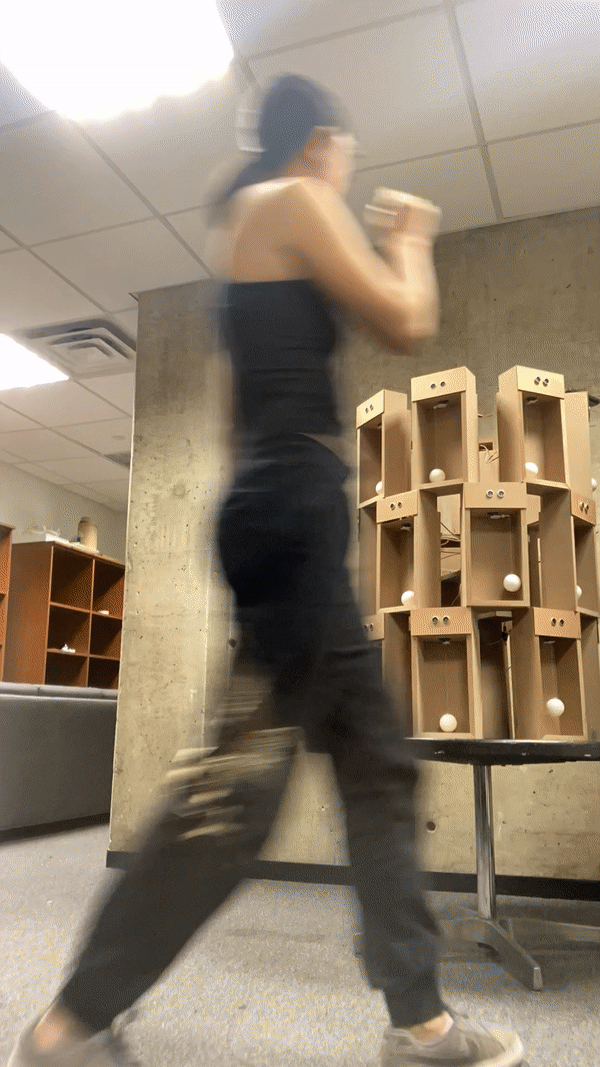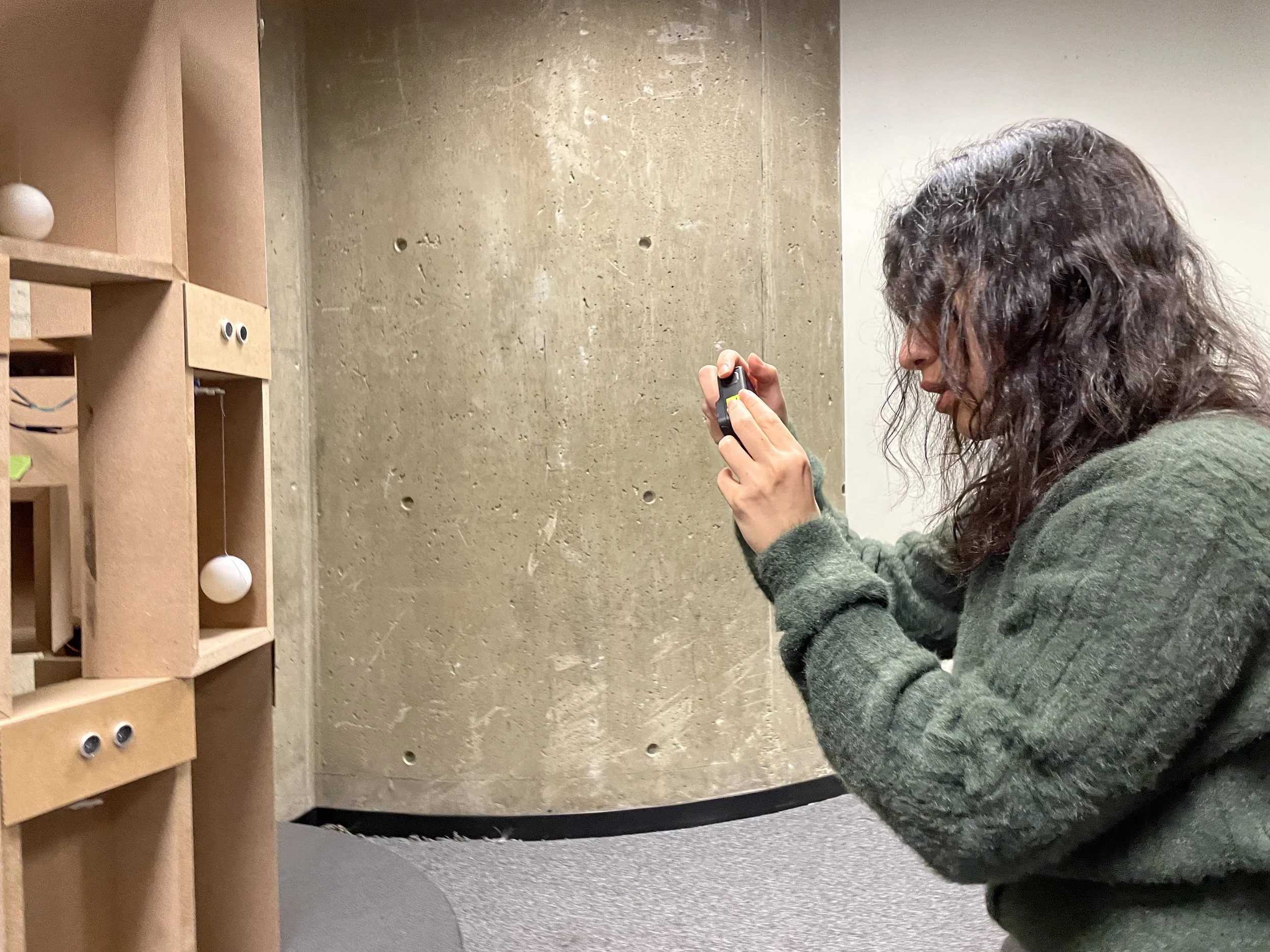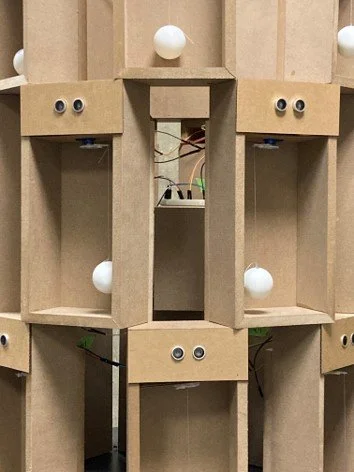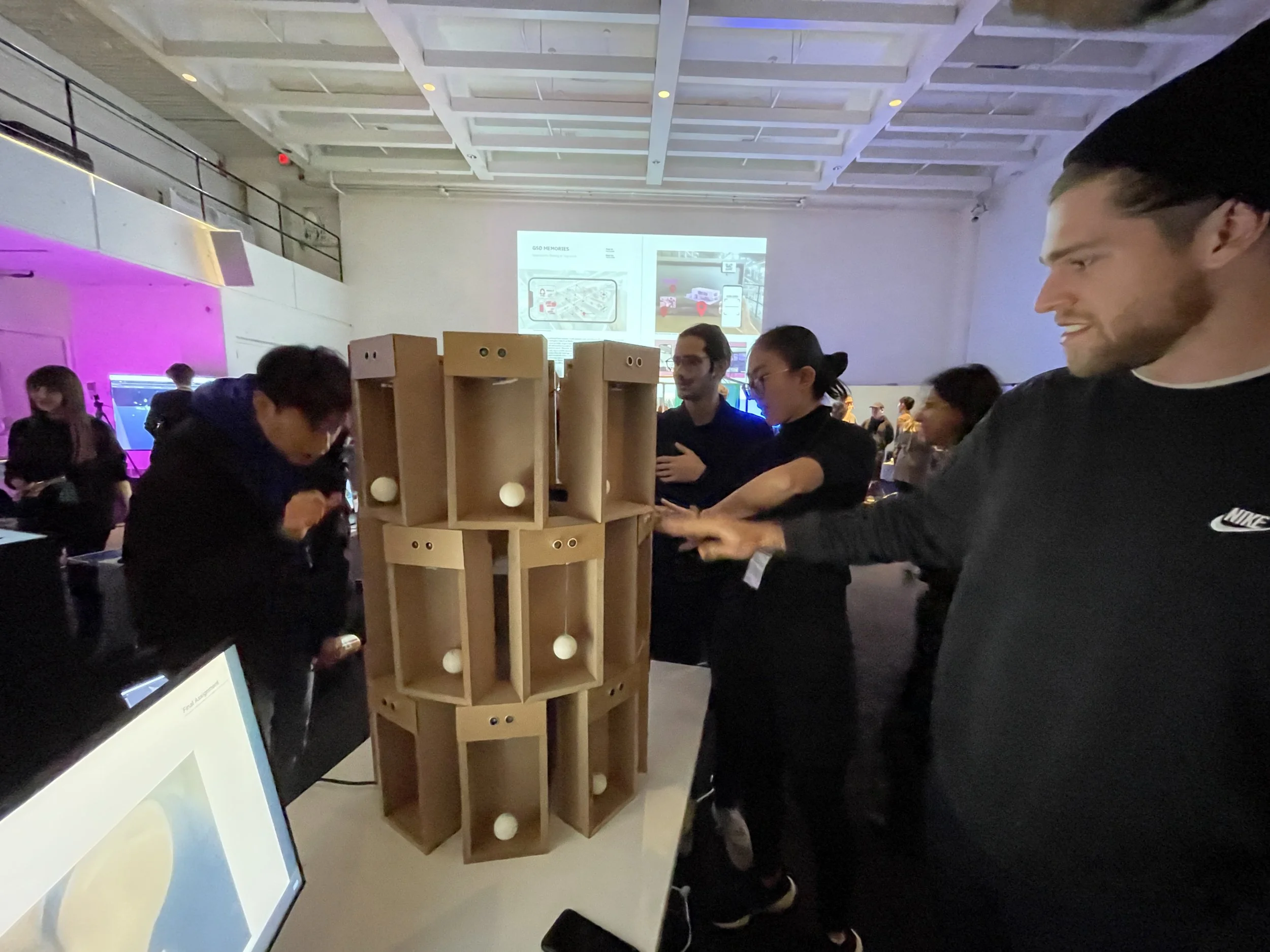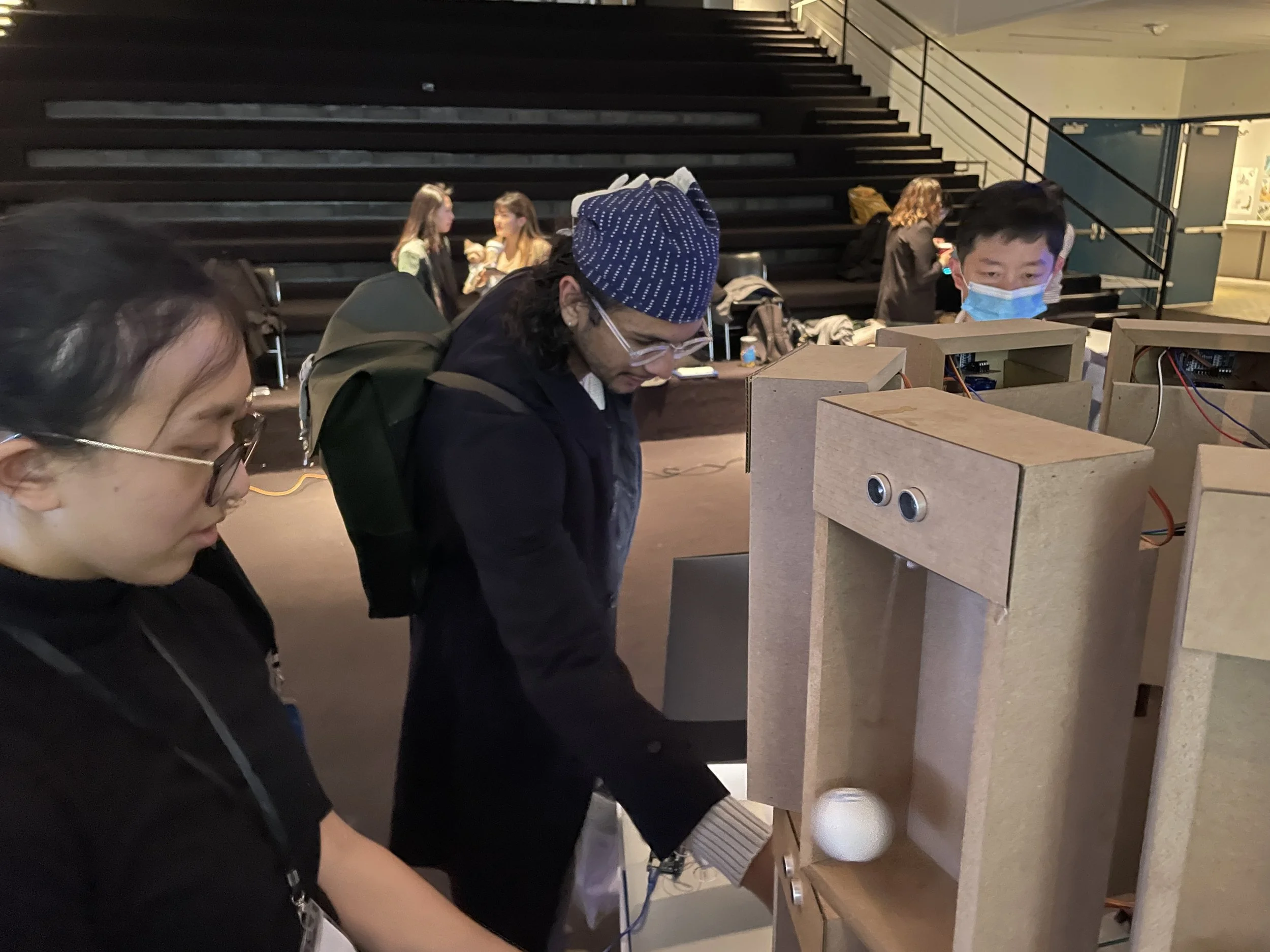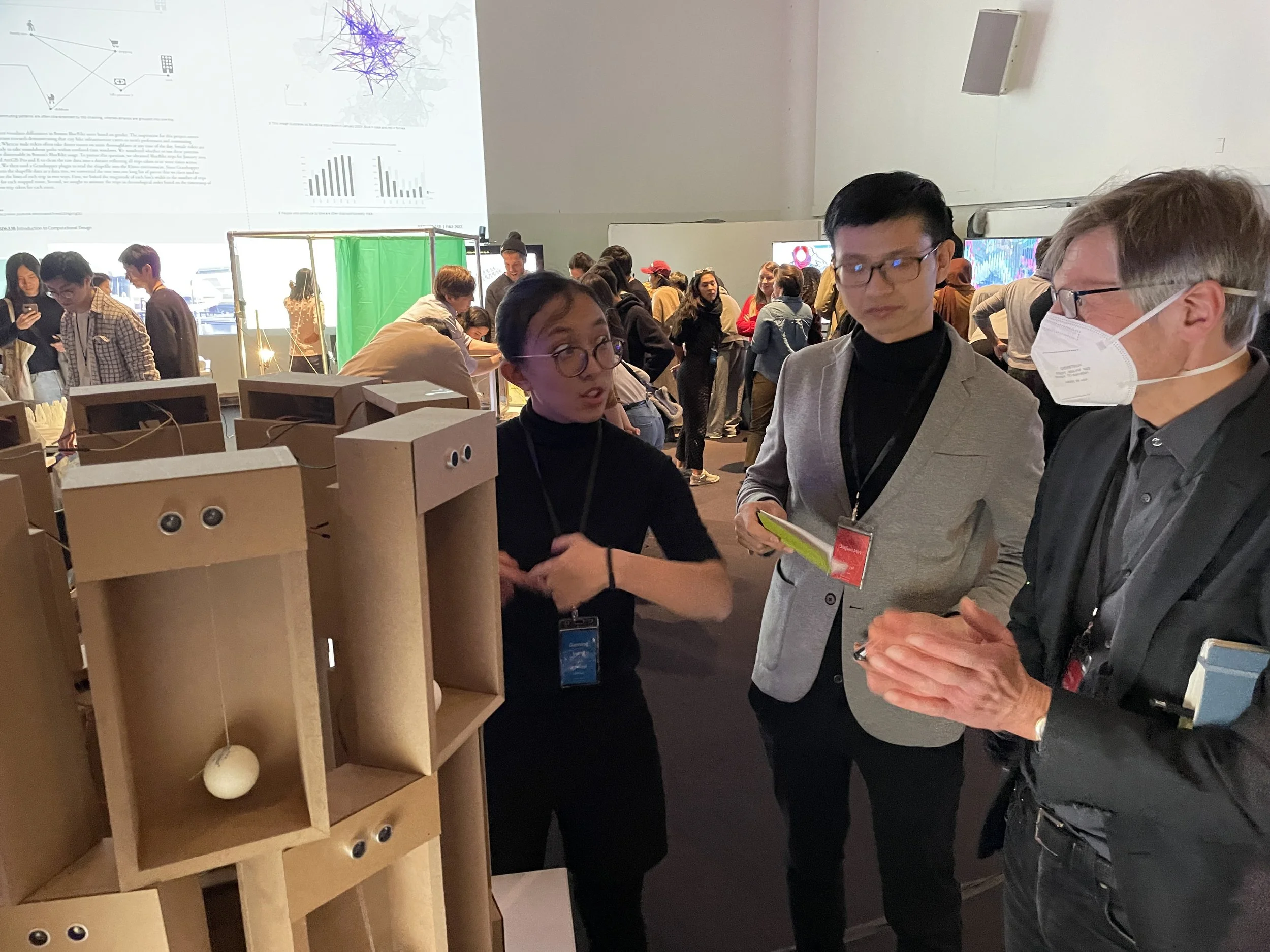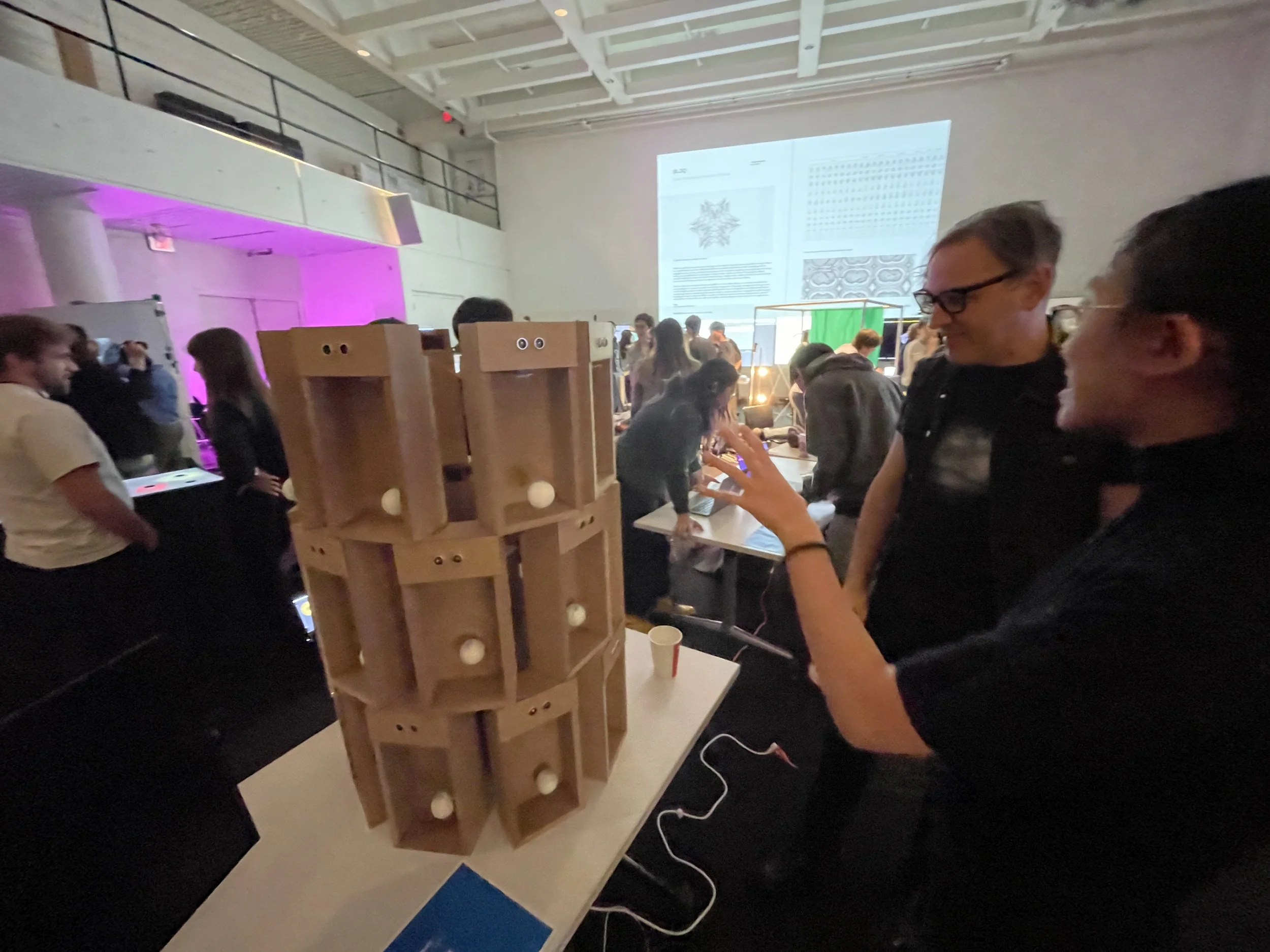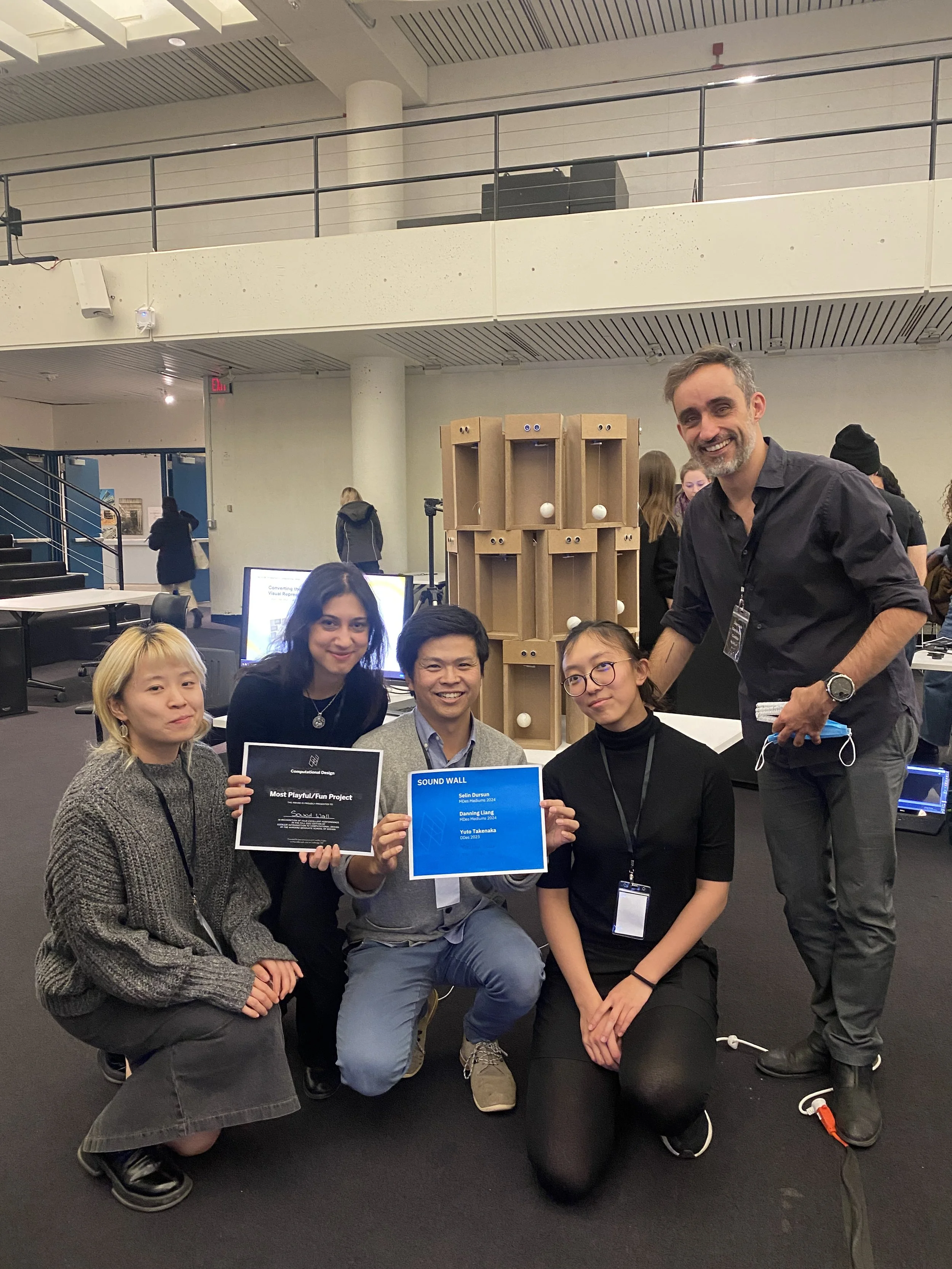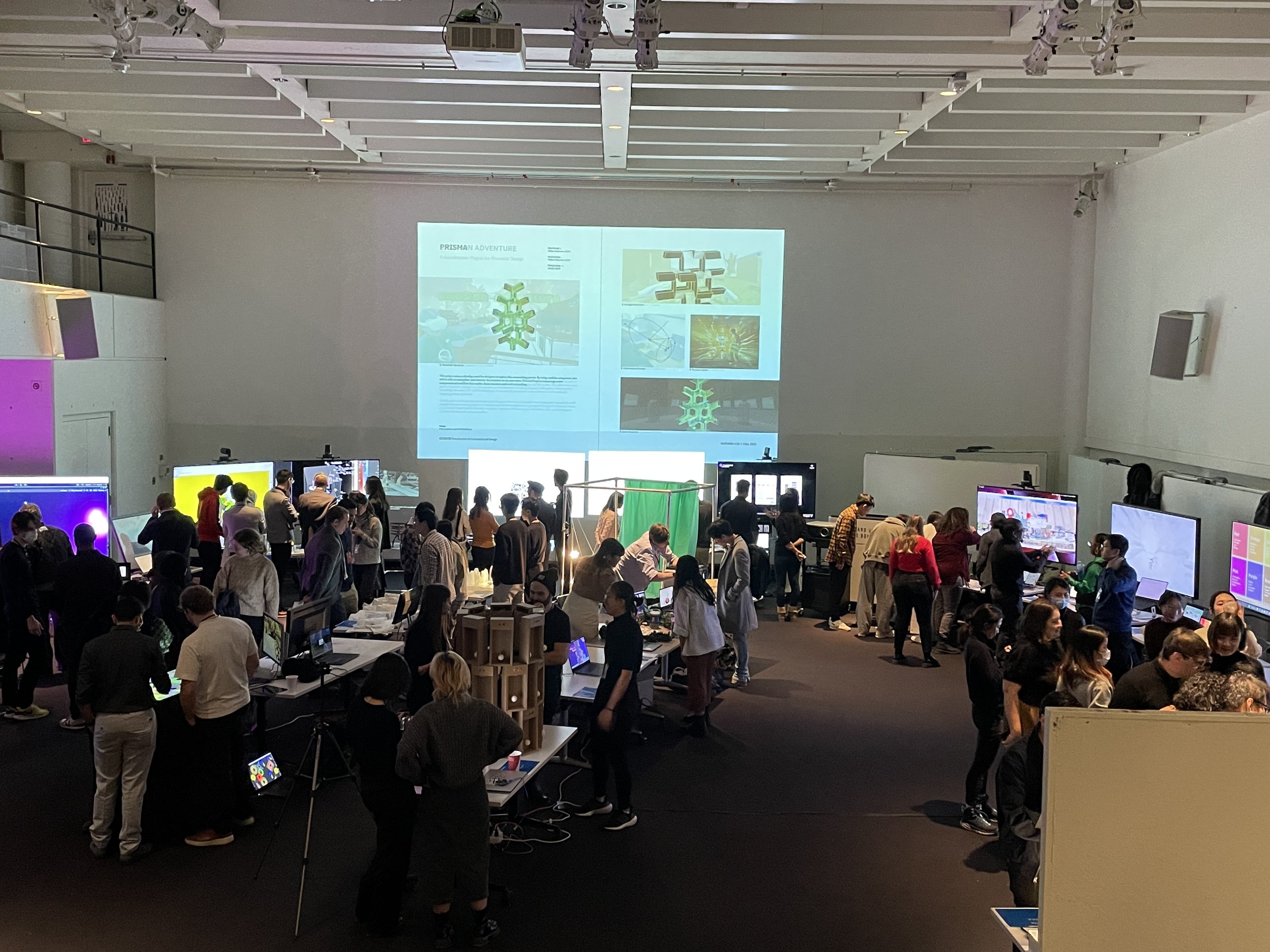Sound Wall
An interactive sound wall that reacts to human participation.
Info:
Computational Design
2022 Fall, 4 weeks
Teammate
Selin Dursun Youtian Duan Yuto Takenaka
Electronics Design Physical Fabrication
Tools:
Electronics, Fabrication; Solidworks, Wood-working
Role:
Input & Output
We envisioned a modular and decentralized facade system where individual blocks react independently to the user. We can look at this system from two perspectives:
Input: Motion may be captured through Kinect or proximity sensor.
Output: Kinetic movements of the facade, sound may be incorporated as a byproduct to the movement. A visual representation of the accumulation of the wall's movements and sound it created over time.
Fabrication Process
To fabricate 24 modules within a limited period of time, we formulated a production system of wire wrapping and soldering and finished all the modules within a day.
Testing
While testing multiple modules synchronously, we realized that the ultrasonic sensors are causing a lot of interference amongst themselves, signals would be projected from one and bounced towards another, which becomes mistaken as human presence. In order to resolve this issue, we placed a simple filter in the arduino code in which the motor can only be triggered if the sensor receives two samples of valid data.
Wall Assembly
To assess the feasibility within the timeframe of the project, we chose a 3 (row) x 8 (column) formation. However, during the electronic troubleshooting process, we changed the formation to cylindrical rather than planar to avoid signal interference.
Final Exhibition
The final outcome is exhibited at the Harvard Graduate School Of Design: Gund Hall with a series of other computation design related works.. We transported individual modules to the site and assembled them real-time.
Award
The sound wall received the “most playful/fun Project” during the computational design exhibition.

